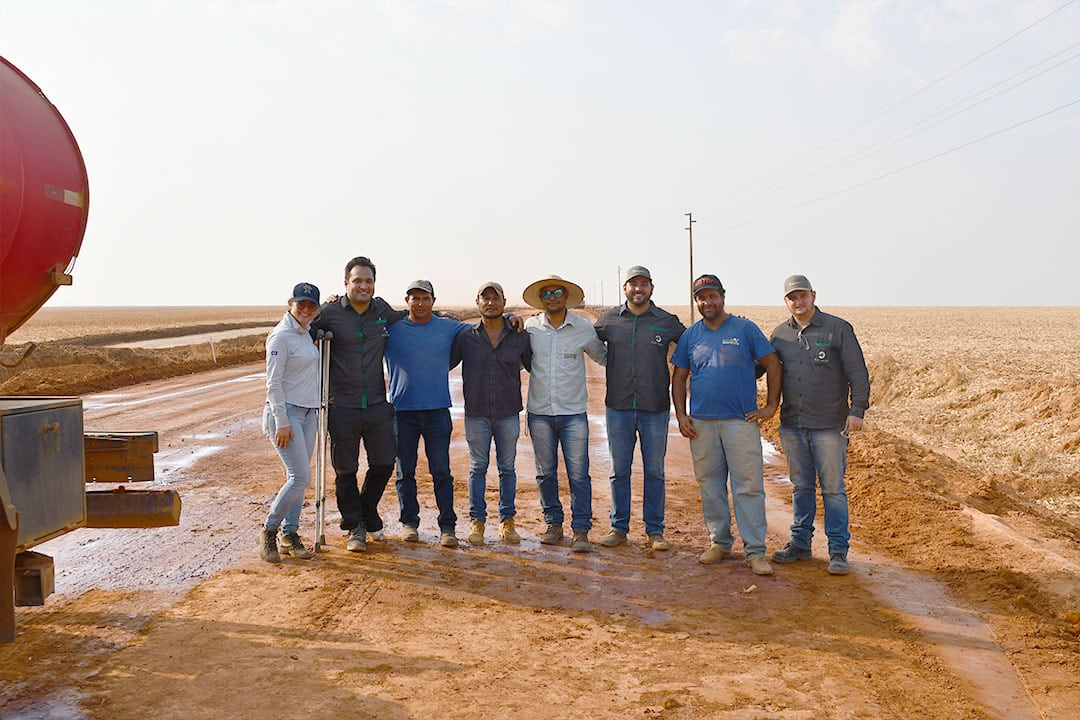
In mid-September, I traveled to Querencia Mato Grosso, Brazil. It was not an easy journey. It took two planes and 13+ hours by car to get into the heart of the Amazon Basin and into Brazil’s central agricultural region.
A good road is integral to a region’s economic and social uplift and is the bedrock of GNP. It is this; to implement a good road, that is the purpose of my travel. To move products to market from this highly agricultural area; a necessity for livelihood and their economy. 50 to 100 kilometers connects the agricultural sector and ensures its viability. If a product cannot get to market, there is no growth.

About the Region
When the plates shifted, Mato Grosso was underwater. The Amazon Basin, one of Brazil’s largest and most fertile regions, is all that is left of the land basin. Crops of cotton, palm, wheat, corn, cashew and vegetables. It is Brazil’s leading producer of soy, corn, cotton, and cattle. It also has coffee, sugar, ethanol, rice, corn, sorghum, peanuts, and sunflower seeds.
The Problem Identified
Dust mitigation was recognised as a huge problem. Much of the haulage roads are made of dirt in the agricultural region. Using our AggreBind patented technology and proprietary composition, we are able to take dirt roads and create hard, solid, non-dusting highways, quickly, efficiently and without harm to the environment. That is especially important for the health and safety of humans, as well as the health of crops and the cattle. It reduces dust-encrusted foliage, which is the ideal environment for insect infestation, which then necessitates chemicals on the crops creating a risk to health that is easily avoided.
The Solution Delivered
Implementing the sample section of road took only eight hours from start to finish. The length was 100m x 20m x 20cm depth. The road was ready for traffic within two hours of applying the surface seal and when the ground was dry to the touch.

Upskilling and Localisation – Expect the Unexpected
Supporting the local contractors and building skills and capability is essential to self-sufficiency, guaranteeing local employment, it eliminates the need for outside contractors.
Why? If you can localize the work, the locals and everyone benefit. It’s about building self-sufficient surroundings, and I firmly believe that the team felt terrific once they finished because of their sense of pride in their work. One of the best things was how they communicated how amazing they felt at completion.
I’ve learned to expect the unexpected with each new implementation. Crews and capabilities vary. I’m on-site to instruct our dealer and the local and municipal workers so they understand how to install a soil stabilized road know how handle the challenges that may arise. This time there were none; the work crew’s craftsmanship was exceptional and almost faultless. They were a skilled road crew using high-quality equipment. Their level of knowledge and comprehension of the job at hand left no doubt they knew what they were doing. It was a true pleasure to work with this team.
Following the success of the 100-meter trial, our local dealer and team are already positioned for numerous projects. We are all excited to support and deliver the projects, jobs and ownership of construction in the region and across the South American continent.

Closing Thoughts
The best part of this project was hanging out with the local crew. Our mission to support, train and upskill crews on AggreBind’s simple implementation process brings me a true sense of accomplishment. Every time I travel to an implementation site, I relish the feeling of starting in ankle-deep dust, and walking away eight hours later from a solid rock-hard road. Video link for article: https://www.youtube.com/watch?v=bxksvP1Onn0
Work with us!
Find out the difference an AggreBind implementation can make to your next project,
